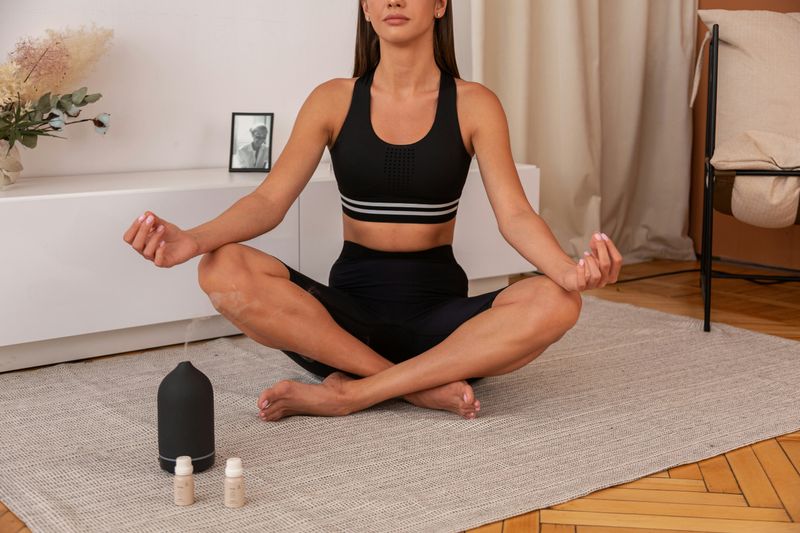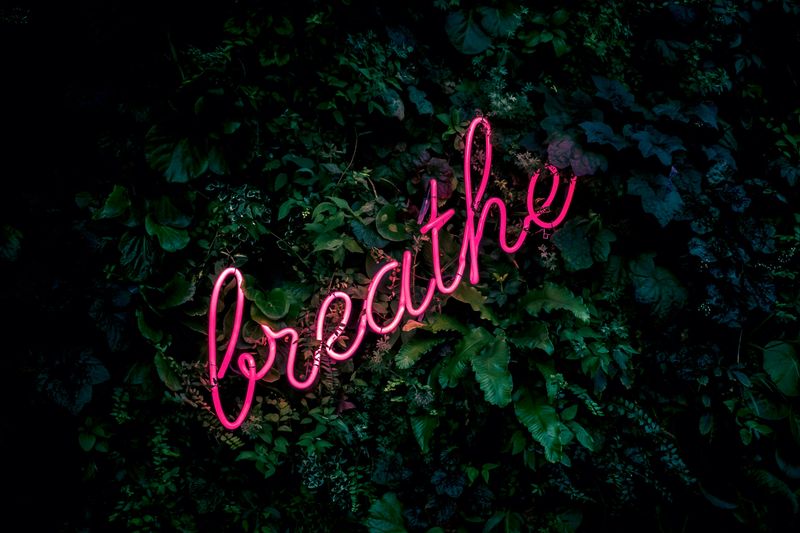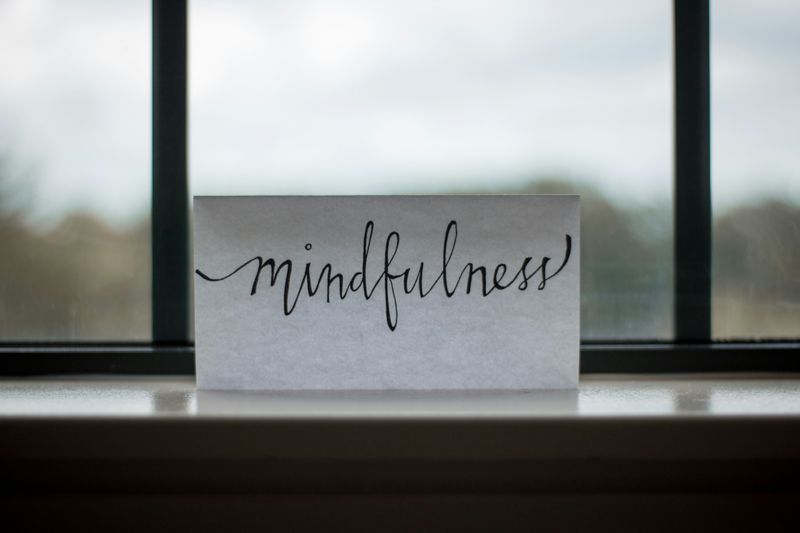60–92% of patients experience some form of stress or worry before surgeries or other medical treatments!
Luckily, there are easy-to-use techniques to help calm your mind. Whether it’s a simple check-up or a more complex procedure, these mindfulness exercises can help you feel more relaxed and in control.

Why Mindfulness Exercises Matter Before a Medical Procedure
Medical procedures, whether minor or major, often bring anxiety and stress. This is natural, as the anticipation of an unfamiliar experience can create tension or fear.
Mindfulness exercises can help ease these feelings, allowing you to approach the procedure with a calm and relaxed mind. This, in turn, can make the experience smoother, aid in pain management, and even support faster recovery.

Overview of 4 Steps
This simple plan can help you feel calm before your procedure:

Prepare your space.

Focus on breathing.

Do a body scan.

Use affirmations.
Each of these steps is designed to help you stay calm and confident before your procedure. However, there are no strict rules on how to follow them — feel free to adapt these mindfulness exercises and adjust each step to suit what works best for you!
Step 1: Preparation Phase — Create a Relaxing Environment
Creating a relaxing environment is essential to set the right mood for relaxation, focus, and productivity. A well-prepared space can increase mental clarity and reduce stress, improving overall performance in relaxation exercises or meditation. Here’s how to do it:
Pick a cozy spot: Choose a comfortable chair, a corner of your bed, or a quiet nook where you can be alone and undisturbed. 🛋️
Remove distractions: Turn off notifications, put your phone on "Do Not Disturb," and, if needed, use noise-canceling headphones to block out background noise. ⛔
Set an intention: Before you begin, silently say to yourself, “I am creating space for calm,” or “I am here to take care of my mind and body.” This simple phrase can help you stay focused and present. 💬
 Photo by volant on Unsplash
Photo by volant on UnsplashStep 2: Breathing Exercise — Focus on Your Breath
Next, take a moment to breathe deeply.
 Photo by Fabian Møller on Unsplash
Photo by Fabian Møller on UnsplashUse your hands to tune in: Place one hand on your belly and the other on your chest. Your goal is to feel your belly move more than your chest. 👐
Breathe in: Take a slow, deep breath through your nose, feeling your belly expand under your hand like a balloon filling up. Hold that breath for just a moment — like you're savoring the last bit of your favorite snack. 🧘
Exhale slowly: Now, let it out through your mouth just as slowly, feeling your belly soften and your whole body relax. Imagine blowing out birthday candles one by one. 🌬️
Repeat: Repeat this cycle 5-10 times. Focus on how your body feels with each breath. If any random thoughts pop up (like what’s for dinner or that email you forgot to send), gently bring your attention back to your breath. No judgment, just refocus. 🔁
Step 3: Body Scan — Release Physical Tension
Time to unwind even further with a body scan. This mindfulness exercise is great for easing stress and helping you feel more grounded. According to Harvard Medical School, a simple body scan can reduce muscle tension and boost your mood in just a few minutes. Try it out:
Start at the top: Close your eyes and bring your attention to the top of your head. Notice how it feels — tight or relaxed?💆♂️
Move down slowly: Now, shift your focus to your neck, shoulders, and arms. As you move down your body, scan for any tension. 🙆♂️
Keep scanning: Continue slowly down your back, hips, legs, and all the way to your feet. Don’t rush — take your time. If you find it hard to relax certain areas, focus on breathing into them. 🧘
Finish at your toes: Once you reach your feet, take a deep breath and notice how much lighter your body feels.🦶
In general, a body scan is about letting it go. When you notice tightness, consciously relax that spot. Imagine your muscles softening, as if you're melting away any tension like ice under the sun.
Step 4: Affirmation and Self-Compassion
Finish with a powerful mindfulness exercise: affirmations. Using positive self-talk can help reduce stress and lift your mood.
Speak kindly to yourself, especially if you feel nervous. Remember, it’s natural to feel anxious before a medical procedure — acknowledge those feelings and then gently release them. The goal is to replace any self-doubt or anxiety with supportive, empowering thoughts.
It’s important to treat yourself with the same kindness and understanding you’d offer a close friend. If anxiety comes up, remind yourself that it’s okay to feel that way. Accept it, and let it pass without judgment.
 Photo by Bart LaRue on Unsplash
Photo by Bart LaRue on UnsplashThe best affirmations are realistic, kind, and supportive. Repeat a calming phrase like:
“It’s okay to feel nervous. I'm allowing myself to relax.”
“Each breath I take fills me with peace and calm.”
“I welcome the support around me.”
Let these words guide you toward a sense of calm and confidence whenever you need it.
Quiz
Sarah is feeling anxious about an upcoming medical procedure and wants to use affirmations to calm herself. Which of the following affirmations would be most helpful? Select all that apply:
Take Action
These mindfulness exercises will help you feel calmer and more in control before a medical procedure by creating a peaceful environment, using deep breathing and body scans to release tension, and repeating affirmations to build confidence.
Your feedback matters to us.
This Byte helped me better understand the topic.

